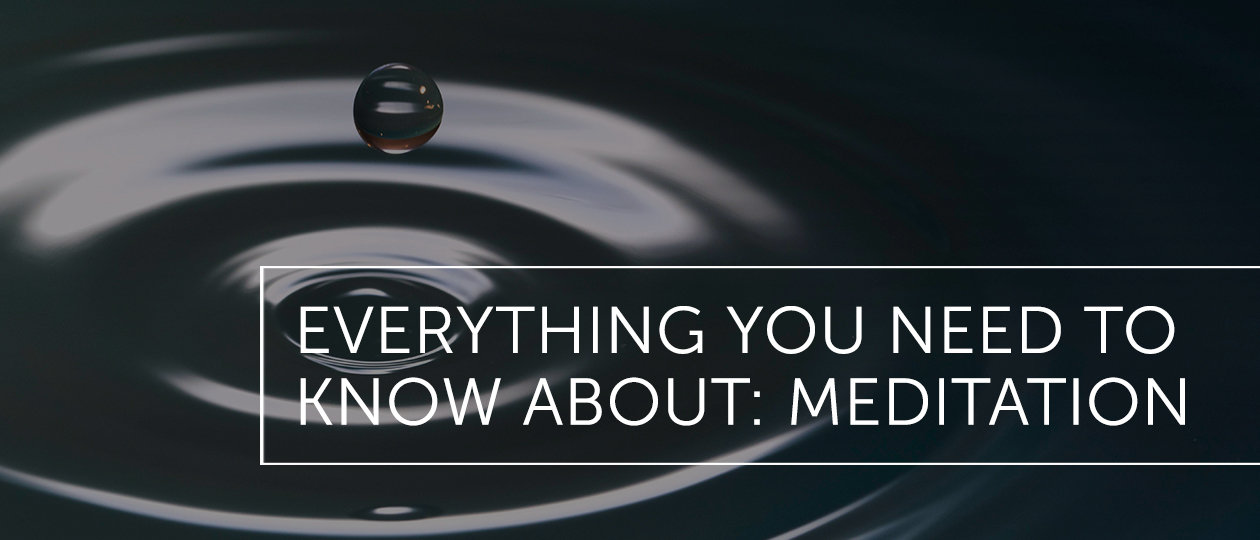Everything You Need To Know About: Meditation
There’s definitely a movement toward embracing simplicity and mindfulness these days. Whether it’s the popularity Marie Kondo’s methods which have even led to a popular Netflix show or the minimalist movement to down size, as a society we seem to be seeking a less cluttered way of life and that includes our thoughts!
Our busy modern lifestyles, however, tend to encourage and even reward busy minds. We’re confident we can do it all, but when do we ever stop and just be?
There are several avenues toward becoming more mindful in today’s busy world and meditation is one of them. Meditation is not new, but it did start becoming more popular here in the U.S. in the 1960s. In today’s post, which is part of a series of articles introducing you to different methods of energy healing, I want to give you a bit more detail on the practice of meditation and its many benefits.
I’ve already talked about meditation earlier this year. Meditation comes from the Latin root “meditatum,” which means “to ponder.” Today’s structured practice of meditation is believed to go back 5,000 years to India. There are many different types of meditation practiced today, such as mindful breathing, loving-kindness meditation and mindful meditation.
Meditation offers time for relaxation and reconnection to ourselves in this stressful world. Even practicing a couple of minutes of mindful awareness helps us put things in perspective, check in with our feelings and reboot.
Research suggests that meditation has the potential for more than just temporary stress relief, however. Meditation has been shown to have many cognitive benefits, such as a decrease in depression levels, a reduction in stress and anxiety, improved attention span and even lessening the effects of aging on the memory.
Google meditation studies and you’ll find it’s been the subject of quite a few academic studies over the last several years. One study from the University of Miami found regular meditation improves your ability to focus and prevent age-related mental decline. "This study is the first to offer evidence that continued meditation practice is associated with enduring improvements in sustained attention," says the study’s author, Anthony Zanesco, PhD.
Another study published in the International Journal of Neuroscience found that 54-year-old meditators had, on average, the biological age of 42-year-olds. And another study, published in Military Medicine, touted the benefits of Transcendental Meditation. Half of the 74 active-duty service members voluntarily practiced Transcendental Meditation regularly in addition to their other therapy; the other half did not. After one month, 83.7% of the meditators had stabilized and reduced or completely stopped their use of psychotropic drugs to treat their PTSD conditions!
If you’re interested in beginning meditation, there are numerous resources online, including guided meditation, as well as apps you can use to guide you. You can also sign up for my free Trilogy method, which combines many energy healing methods, including meditation.
The main steps to meditation are to:
- Find a quiet place and sit upright in a chair or on the floor, legs crossed (if that is comfortable for you.)
- Focus on your breath. Feel yourself breathing in and out. Feel yourself letting go.
- Let your thoughts move in and out. Let them go as they enter your mind and do not dwell on them. This gets easier with time.
There is no right way or wrong way to meditate. Simply focus on disconnecting and letting go for a few minutes. If you can start even with 2 minutes every morning you’ll begin to establish this as a habit and a very healthy one at that!
That said, why wouldn’t you want to try meditation? Even practicing a couple of minutes of mindful awareness helps us put things in perspective, check in with our feelings and reboot. Meditation can easily done at home or at work or even while traveling and the benefits are numerous.
Have a blessed, wonderful day!



